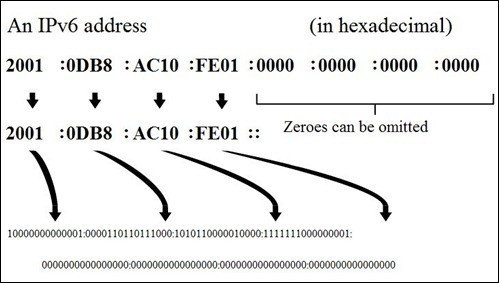- It is replacement of IPv4
- IPv6 address following issues with IPv4
- impending exhaustion of IPv4 address space
- ability of Internet backbone routers to maintain large routing tables
- Need for simpler autoconfiguration and renumbering
- Requirement for security at the IP level (IPSec)
- better support for real-time delivery of data, known as quality of service (QoS)
- IPv6 also called as IPng (Internetworking Protocol, next generation).
- IPv6 address is 128 bits long.
- Ipv6 header has got separate options field to speed up routing
- Ipv6 uses Flow Label field for QoS
- It has options for encryption and decryption of data.
- IPv6 address
- It is divided into 8 parts of 16 bits length.
- Each 16 bit part is represented by four hexadecimal digits.
- A colon is used to separate every four hexadecimal digits.
- Hence, address consists of 32 hexadecimal digits.

AWS Certified Advanced Networking Specialty Free Practice TestTake a Quiz
